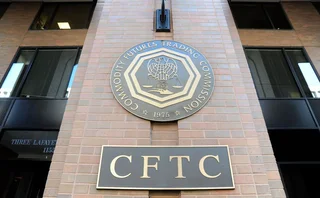

Currenex case may herald focus on e-FX’s ‘Wild West’ days
FX sources say “uncomfortable secrets” could emerge as attention turns to platform relationships
Currenex may be in the crosshairs of a new lawsuit in the US, alleging users of the platform were harmed by secret deals it agreed with some market-makers – but some believe it could be the start of a wider look at the behaviour of other venues and their liquidity providers (LPs) in the early days of electronic trading, and the years that have followed.
After initially focusing on trading behaviour in the FX markets, attention has gradually been turning to the trading venues and their
Only users who have a paid subscription or are part of a corporate subscription are able to print or copy content.
To access these options, along with all other subscription benefits, please contact info@risk.net or view our subscription options here: http://subscriptions.risk.net/subscribe
You are currently unable to print this content. Please contact info@risk.net to find out more.
You are currently unable to copy this content. Please contact info@risk.net to find out more.
Copyright Infopro Digital Limited. All rights reserved.
As outlined in our terms and conditions, https://www.infopro-digital.com/terms-and-conditions/subscriptions/ (point 2.4), printing is limited to a single copy.
If you would like to purchase additional rights please email info@risk.net
Copyright Infopro Digital Limited. All rights reserved.
You may share this content using our article tools. As outlined in our terms and conditions, https://www.infopro-digital.com/terms-and-conditions/subscriptions/ (clause 2.4), an Authorised User may only make one copy of the materials for their own personal use. You must also comply with the restrictions in clause 2.5.
If you would like to purchase additional rights please email info@risk.net
More on Regulation
CFTC aims to clarify murky futures extraterritoriality rules
Acting chair Pham says she wants to fix confusion created by last year’s Falcon Labs order
CFTC aims to settle enforcement cases within 30 days
Remediation initiative accompanies new effort to slash penalties for technical violations
Gilt repo clearing mandate on Bank of England’s radar
Sources say regulator mulling benefits of US-inspired regime, but is non-committal
Delving into the European Commission’s proposed overhaul of FRTB
Raft of potential changes would benefit both IMA and SA banks – but only temporarily
Why the survival of internal models is vital for financial stability
Risk quants say stampede to standardised approaches heightens herding and systemic risks
Crypto custody a bit(coin) closer after US accounting U-turn
Federal banking supervisors expected to eventually relax regimes for safeguarding digital assets
Japan’s regulator stands firm behind Basel as peers buckle
Japanese banks fear being at a disadvantage to rivals as Basel III implementation falters
EU racing to comply with active account rules
Industry wants simpler route to exemptions ahead of ‘challenging’ deadline for new clearing regime







